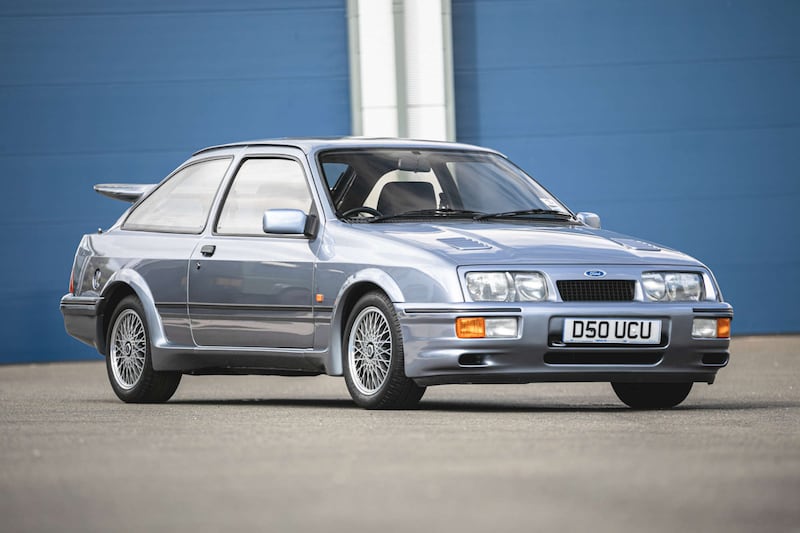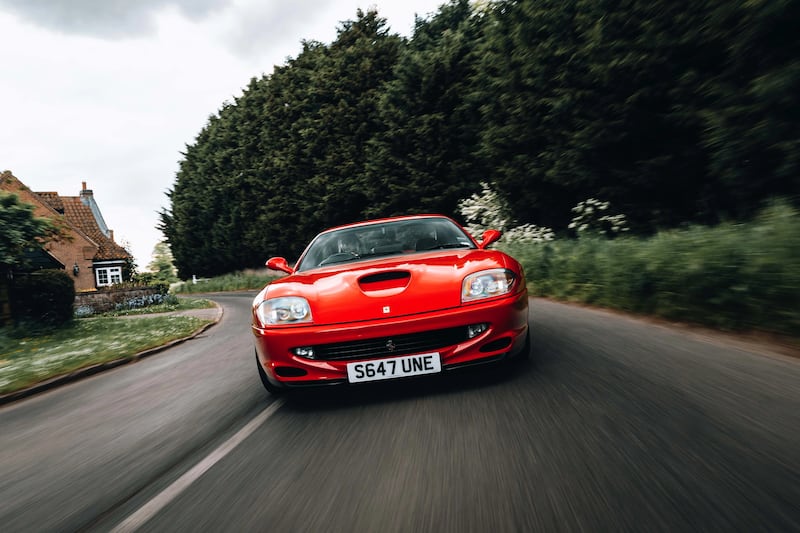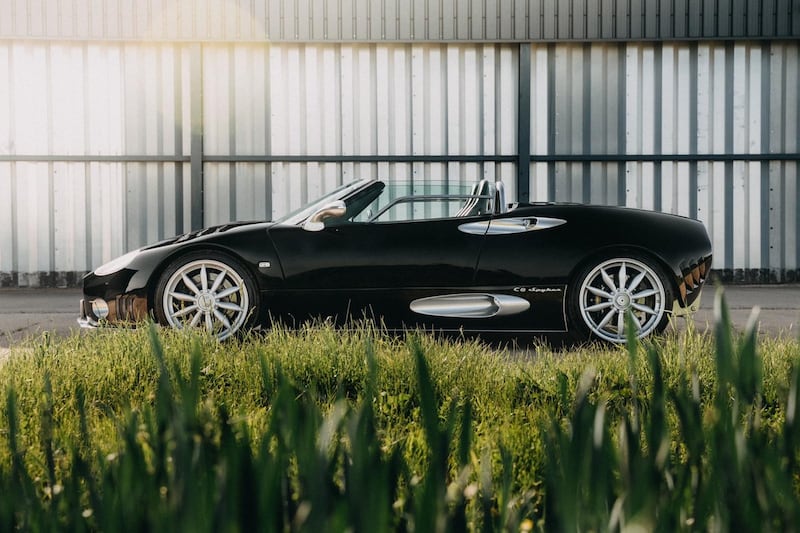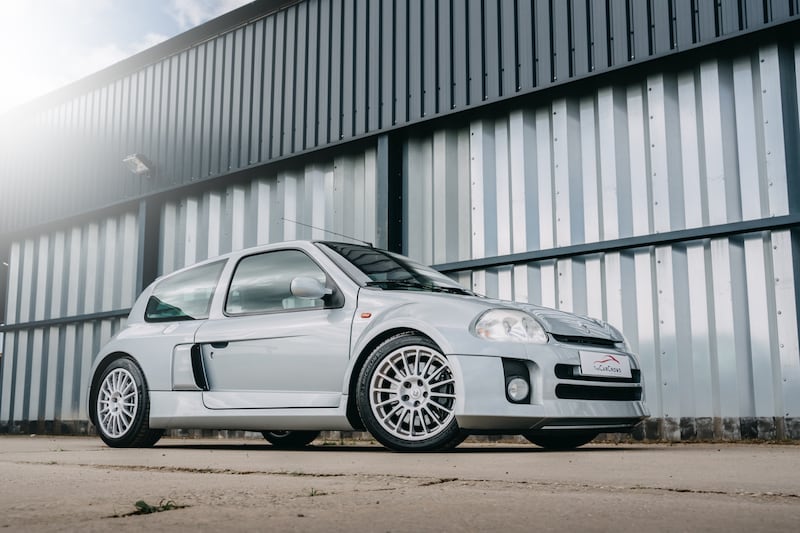We’ve possibly all thought about it. Seduced by glamorous images, blinded by the reflection of sunlight on acres of chrome, beguiled by the smell of aged leather – who wouldn’t want to own a classic car?
There are clear financial benefits, too. According to Statista, the global value of the classic car market is expected to grow from $33 billion (€30.75 billion) last year to more than $43 billion by 2024. Classic car insurance expert Hagerty says that while the average price paid for a classic car at auction has slipped from its 2022 peak, it’s still higher than was historically the case and stands at around £45,000 (€52,000).
Other estimates have it that classic car values have climbed by 193 per cent in the past 10 years and a glance through the back pages of publications such as Classic Cars or Classic and Sports Car will show you that six-figure prices (for cars you could once upon a not-so-long-ago time buy for €20,000) are pretty much the norm.
How to break into such a market, though? To go the obvious route – buy a Ferrari – you’re looking at a minimum of €100,000 for anything from the 1960s or 1970s. Even unloved exotics from the 1980s are now making bank. Predicting which of the more recent crops are going to go up in value is a risky game too.
There may be a solution to this in the shape of fractional investment. Rather in the manner of owning a share of a racehorse, you can now invest a small amount into part-ownership of a classic car. The service is being offered by UK-based firm The Car Crowd and the idea is to make it about more than simply investment but also about stewardship and preservation.

David Spickett, chief executive of The Car Crowd, told Business Ireland: “I guess my vision – and my passion – was always that this wouldn’t be reserved for the rich. I feel there’s too many investment options available for the rich already. If you’re a high-net-worth investor, well you can do whatever you want with your money and that’s fine. If you’re a retail investor, though, with maybe €1,000 to invest, there’s not that many options out there.”
The idea of putting those fractional investments into cars came about because Spickett is himself a car nut, a passion inculcated by Sunday afternoons with his father, watching rallycross racing at the famed Lydden Hill circuit in rural Kent.
“My earliest motoring memories are of scraping mud out of the wheel arches of a rallycross Mini at Lydden, having a fried egg sandwich and then watching the likes of Martin Shanche and Trevor Hopkins wrestling monsters like Ford RS200s and MG Metrol 6R4s around the track,” he said.
Investment as enjoyment
Lydden Hill and fried egg sandwiches are about as far from the pinstripes-and-power-lunches image of the investment market as you can get. But that is pretty much Spickett’s point – this is about investment as enjoyment, as well as financial gain.
The Car Crowd’s plan for the moment is to invest in cars built largely in the 1980s and 1990s. These are starting to appreciate and to be accepted by the broader classic car world as genuinely significant but their relatively low prices means that there’s more potential for appreciation and they’re a more affordable investment than a 1960s Ferrari or similar.
So far, cars invested in include a Renault 5 GT Turbo, a Peugeot 205 GTI, a Ford Sierra RS Cosworth, a Vauxhall-Lotus Carlton and even a more modern Mini Cooper S.
“We’re trying to get people who loved these cars when they were kids and maybe they’re in their forties now and have some money to invest. They may not have tens of thousands – maybe they’ve got two, or three, or four hundred – but that’s fine,” said Spickett.
Each car is issued with 1,000 shares; the most anyone can buy is 100 shares. Most cars have between 60 and 90 people investing in them. Investors vary from a couple who bought a single share in the Peugeot 205 GTI because they’d used one as their wedding car to an investor who has bought 10 per cent of each car as a sort of spread bet on appreciation.
Stick or twist
Every six months a valuation report and assessment of the market is provided, and a vote is taken among the investors on whether to sell the car. Once a quorum of 15 per cent of each car’s investors have voted, a 51 per cent vote will decide whether to stick or twist, up to a maximum of five years.

There’s a catch, though. You might own 10 per cent of a classic but you won’t get to drive it for 10 per cent of the time. These cars are not going to be driven at all, in fact.
Spickett defended that decision. “We’re not trying to get people to stop driving classics – far from it,” he said. “I have my own classics, which get driven plenty. But what we are doing is trying to preserve these specific cars. Take our Sierra Cosworth – it still has its original bright orange turbo pipe, as fitted from the factory. Most Cosworths have had theirs replaced by now because it’s a perishable part but ours is all-original. That’s worth preserving.”
Clearly, there’s a financial imperative too – each car will have to be kept in pristine condition to make back its investment, plus a profit.
The cars won’t be locked away, though. Spickett is planning to have them on display in what he describes as the first car museum where the exhibits are owned by ‘petrolheads’ and exhibited for the delight of others. Plans are afoot for more space, more cars and a coffee shop, and for classic car rallies and gatherings to take place at The Car Crowd’s headquarters near Nottingham.
Brexit paperwork
Irish investors are welcomed but their journey will be a little harder than for UK citizens. UK residents can invest just by clicking on the website but, thanks to Brexit, Irish classic car fans will have to go through a paperwork-and-ID process.
For the purposes of regulation, The Car Crowd is an appointed representative of Keisson Capital, which is regulated by the UK’s Financial Conduct Authority. Each car is subject to a fee for its curation and maintenance, which is capped at 10 per cent of its value but more usually works out at around 6-7 per cent, which is how The Car Crowd turns its own profits.

There are risks, of course. Back in the late 80s there was a massive boom in classic car values, which turned out to be a bubble. It burst, and classic car prices were in the doldrums for several years, a time when you could have bought, say, a 1960s Aston Martin for the same price as an average family car. That same Aston Martin would now be worth as much as €500,000 which is a heck of a return on investment, but only if you bought at the bottom of the market.
Spickett remembers that bubble himself but said: “With any investment there is an element of risk but if you look back to that bubble, when it burst the cars that suffered were the ones that were of lower quality. The best cars will retain a resistance to any bubble or any crash in values. We call it the ‘podgy middle’ of the classic car world – cars that might be nice enough but they’re not the best of the best. The best will have a resilience.”

It will also be down to the individual investors to decide which cars to buy next, thanks to polls that The Car Crowd will run among its clients. It does seem to be in precisely the sort of ‘ordinary’ classics that the group is currently buying where one finds the best appreciation.
Forget €40 million Ferraris
Ashley Winston, who runs Palmdale, a car-sourcing and buying service that keeps close tabs on the market, told Business Ireland: “The safe money, if it can be called that, is now in more everyday classics. Forget €40 million Ferraris, how about an old Volvo? You used to be able to get a Volvo Amazon for a couple of grand. In fact, one of those was my first car. Now you’d be lucky to find one for under €15-20,000.”
Other potential classics gaining value are E28 5 Series BMWs and even the W140 Mercedes-Benz S-Class from the early 90s. Big investors, said Winston, won’t look at cars such as those – “they simply won’t make enough money in one transaction for it to be worth their while”.

Josh Sadler is heritage director of renowned Porsche experts Autofarm. He told Business Ireland that when it comes to finding a safe-haven classic, there’s no substitute for legwork.
“Porsche values have softened, yes, but it’s a cyclical thing,” Sadler said. “Good, original, cars are always going to be sought after whether you’re spending €60,000 or €600,000. More questionable cars, the ones without good history, tend to come to the market when things get softer, but provenance is everything.
“If I’m looking at a car, the first thing I look at is the paintwork, partly because it’s so hard to fake. Patina – real patina and use, as opposed to overly-shiny restorations – is becoming more desirable and I think that’s part of a search for greater authenticity. It’s a question of picking a price range and finding a good one.”














